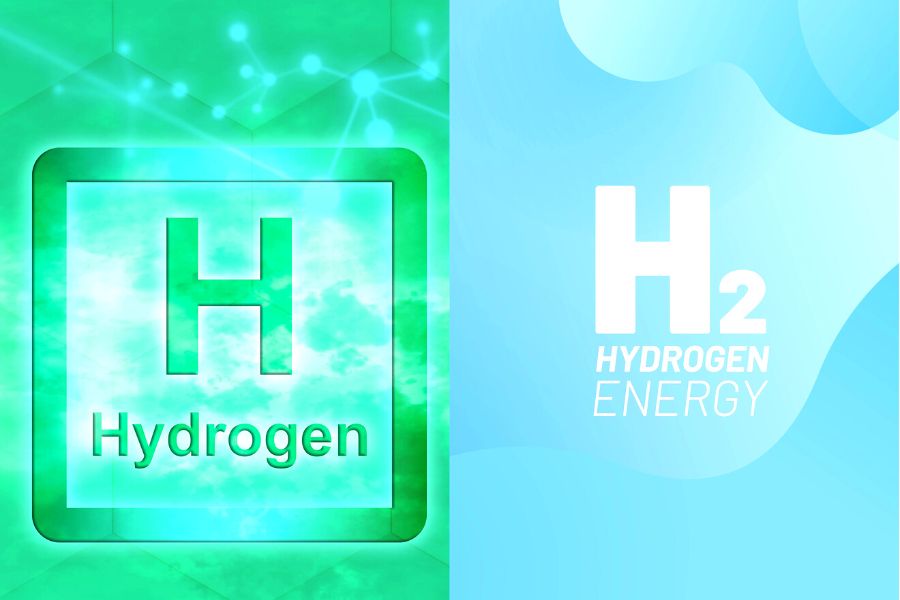Saudi hydrogen economy rising in regional areas

The country may hold potential for both green and blue varieties, with green hydrogen being developed in west of the Kingdom, blue hydrogen in east; business case for both will be tested soon
Seeking new energy in KSA
Late last month, in the midst of a serious energy crisis, German Chancellor Olaf Scholz went to Saudi Arabia. He was accompanied by a delegation including the CEOs of Thyssenkrupp AG, SAP, and Siemens Energy.
Of particular interest was Germany’s desire to import “large amounts of hydrogen” following both countries’ push towards “a CO2 neutral future”.[i]
Due to the economic fallout caused by the Russia-Ukraine conflict, Europe is expected to endure power outages during a harsh winter. While the question in many peoples’ minds may be ‘why Saudi Arabia?’, recent events and developments would lead to the opposite question, ‘Why not Saudi Arabia?'
The German chancellor’s appearance shows that KSA is being taken seriously as a major player in the emerging field of carbon-free hydrogen, with significant export potential. The country has made significant investment in it through two main channels, including its Public Investment Fund (PIF) and its largest company, Aramco.
A general geographic pattern is emerging. Green hydrogen, made with renewable energy, is being developed in the west of the country with the region’s ample wind and solar resources. Blue hydrogen, which requires carbon capture to become carbon-free, is targeted in various Aramco projects in the east of the country.
Energy and Utilities looked at developments in the two regions, to gain a sense of how the world’s so-called ‘hydrogen economy’ is likely to take shape in Saudi Arabia.
Making moves toward blue H2
In 2020, Aramco and its subsidiary SABIC collaborated on the world's first shipment of blue ammonia. Forty tons of high-grade blue ammonia were dispatched for use in low-carbon power generation in Japan.[ii]
The demonstration shipment, although small, sowed seeds two years ago that seem to be bearing fruit.
In August, TUV Rheinland, a German-based independent testing, inspection and certification company, awarded the world’s first independent certificate of accreditation for producing blue hydrogen and ammonia products to Aramco and to Sabic Agri-Nutrients (AN), a fertiliser producer.[iii]
As per the certificate, 8,075 tonnes (metric tons) of blue hydrogen were produced by Sasref (Saudi Aramco Shell Refinery). Sabic AN will produce 37,800 tonnes of blue ammonia. To certify ammonia and hydrogen as “blue”, a significant part of the CO2 associated with the manufacturing process needs to be captured and permanently stored or utilized in downstream applications.
Aramco’s goals are promising and very ambitious: production of 11 million metric tons per annum of blue ammonia by 2030; 5-9 million tons of carbon dioxide captured and stored every year starting in 2026. This carbon capture and storage (CCS) will occur in Jubail Industrial City, located on the east coast of Saudi Arabia.[iv]
Starting domestically
Researchers at King Abdullah Petroleum Studies and Research Centre (KAPSARC) in Riyadh have made a careful evaluation of the relative opportunities for blue and green hydrogen, in its report The Economics and Resource Potential of Hydrogen Production in Saudi Arabia, issued last spring. They looked at realistic cost scenarios based on realistic assumptions about the price of natural gas in Saudi Arabia, and the cost of electricity from renewable sources. The predicted costs and capacity factors of electrolysis systems were also carefully considered.[v]
Hydrogen exports to Asian and European markets are possible, they write, but the cost of conversion to ammonia and the shipment of said ammonia followed by its reconversion to H2 is high.
KAPSARC suggested starting domestically. In this approach, Saudi industries will buy the green H2 and ammonia produced in country, to be used in locally based industries.
This would lead to two environmentally positive outcomes. First, it would stimulate the eventual de-carbonization of domestic industries, particularly ammonia and methanol plants, by converting them to produce low-cost blue or green hydrogen. As a result, secondly, such a conversion might extend to other domestic industries, such as steel, cement and aluminium. The researchers also highlighted potential in the transport sector, which could see environmental gains from innovative fuel cell technology and more environmentally friendly jet fuel.
According to research led by Antoine Vagneur-Jones, head of Trade and Supply Chains at BloombergNEF, the competitiveness of blue hydrogen would depend on the price at which gas is acquired from Aramco. That the market for natural gas in Saudi Arabia is highly managed, price controlled and directed to domestic demand, may make the economics of blue hydrogen more viable in KSA than elsewhere.
Whether blue hydrogen will be a viable alternative to other colours in terms of cost remains to be seen. But the Kingdom isn’t putting all its eggs in one basket.
Going green in the west
In the western region of Saudi Arabia lies the outline of what will one day become NEOM, a sustainable, zero-carbon and high technology new city. On paper, it appears to be an excellent place to plant the seeds of the Kingdom’s green hydrogen future.
Saudi Arabia is on track to produce carbon-free hydrogen at a $5 billion facility located in the new industrial district at NEOM, beginning in 2026.[vi] This project is being led by ENOWA, an energy and water subsidiary formerly known as NEOM Energy and Water Company.[vii]
Riyadh-based ACWA Power, now half owned by the Saudi government’s Public Investment Fund (PIF), is partnering with Air Products and Chemicals, Inc., an American chemical and industrial gas corporation, to develop the hydrogen-based, green ammonia plant in the industrial area.[viii]
The project has ambitious goals: a daily target of 650 tonnes of hydrogen and a yearly goal of 1.2 million tonnes of green ammonia. The fuel will be shipped from Saudi Arabia as ammonia, which, in its gaseous form, is easier to transport than hydrogen.
To adequately reach these numbers, 120 Thyssenkrupp electrolysers, each of them about 40 meters long, will be used to split hydrogen from water by electrolysis. The plant will be powered by around 4 gigawatts of solar and wind power, making it one of the largest being built globally. Naturally, this area was chosen due to its abundant sunlight, wind and vacant land to install solar panels and turbines.
Construction of the green hydrogen plant started this year. Engineers have finished flattening the site. Air Products will begin building the facility soon in line with their plans to begin production and distribution in ’26. A ‘final investment decision’ (FID) took place in June of this year, with planned delivery of the first electrolyser unit in '24, and completion of the plant in '26.
Energy & Utilities reported at length on the KAPSARC report, analysing blue and green hydrogen opportunities in Saudi Arabia, in June.
[i] Jennen, Birgit. “Germany's Scholz in Saudi Arabia as Gas Crunch Bites Economy.” Bloomberg, September 24, 2022. https://www.bloomberg.com/news/articles/2022-09-24/germany-s-scholz-in-saudi-arabia-as-gas-crunch-bites-economy.
[ii] Aramco and SABIC Agri-Nutrients Receive World’s First TÜV Certificate of Accreditation for “Blue” Hydrogen and Ammonia Products. Sabic.com, August 4, 2022. https://www.sabic.com/en/news/36507-aramco-and-sabic-agri-nutrients-receive-world-s-first-tuv-certificate.
[iii] Rahman, Fareed. “Aramco and Sabic Agri-Nutrients certified for blue hydrogen and ammonia production.” The National, August 4, 2022. https://www.thenationalnews.com/business/energy/2022/08/04/aramco-and-sabic-agri-nutrients-certified-for-blue-hydrogen-and-ammonia-production/.
[iv] Ratcliffe, Verity. “World’s Largest Oil Exporter Has to Go Big on Carbon Storage.” Bloomberg, August 11, 2022. https://www.bloomberg.com/news/articles/2022-08-11/world-s-biggest-oil-exporter-to-make-huge-bet-on-carbon-storage#xj4y7vzkg.
[v] Mammoser, Alan. “Saudi Arabia Bets Big on Blue Hydrogen.” OilPrice.com, June 14, 2022. https://oilprice.com/Energy/Energy-General/Saudi-Arabia-Bets-Big-On-Blue-Hydrogen.html.
[vi] Nereim, Vivian. “Saudi Arabia to Start Building Green Hydrogen Plant in Neom.” Bloomberg.com, March 17, 2022. https://www.bloomberg.com/news/articles/2022-03-17/saudi-arabia-to-start-building-green-hydrogen-plant-in-neom#xj4y7vzkg.
[vii] NEOM launches ENOWA to accelerate the development of world-class, smart, and connected energy and water systems. NEOM.com, March 21, 2022. https://www.neom.com/en-us/newsroom/neom-launches-enowa.
[viii] Mammoser, Alan. “Saudi Arabia Looks to Position NEOM As a Hydrogen Leader.” OilPrice.com, April 12, 2022. https://oilprice.com/Alternative-Energy/Fuel-Cells/Saudi-Arabia-Looks-To-Position-NEOM-As-A-Hydrogen-Leader.html.
Energy & Utilities - Middle East and Africa Market Outlook Report 2024.
This must-have report for industry players offers a thorough understanding of the latest developments, challenges, and opportunities in the region, supported by data, analysis, and expert insights.


.png)
.png)

